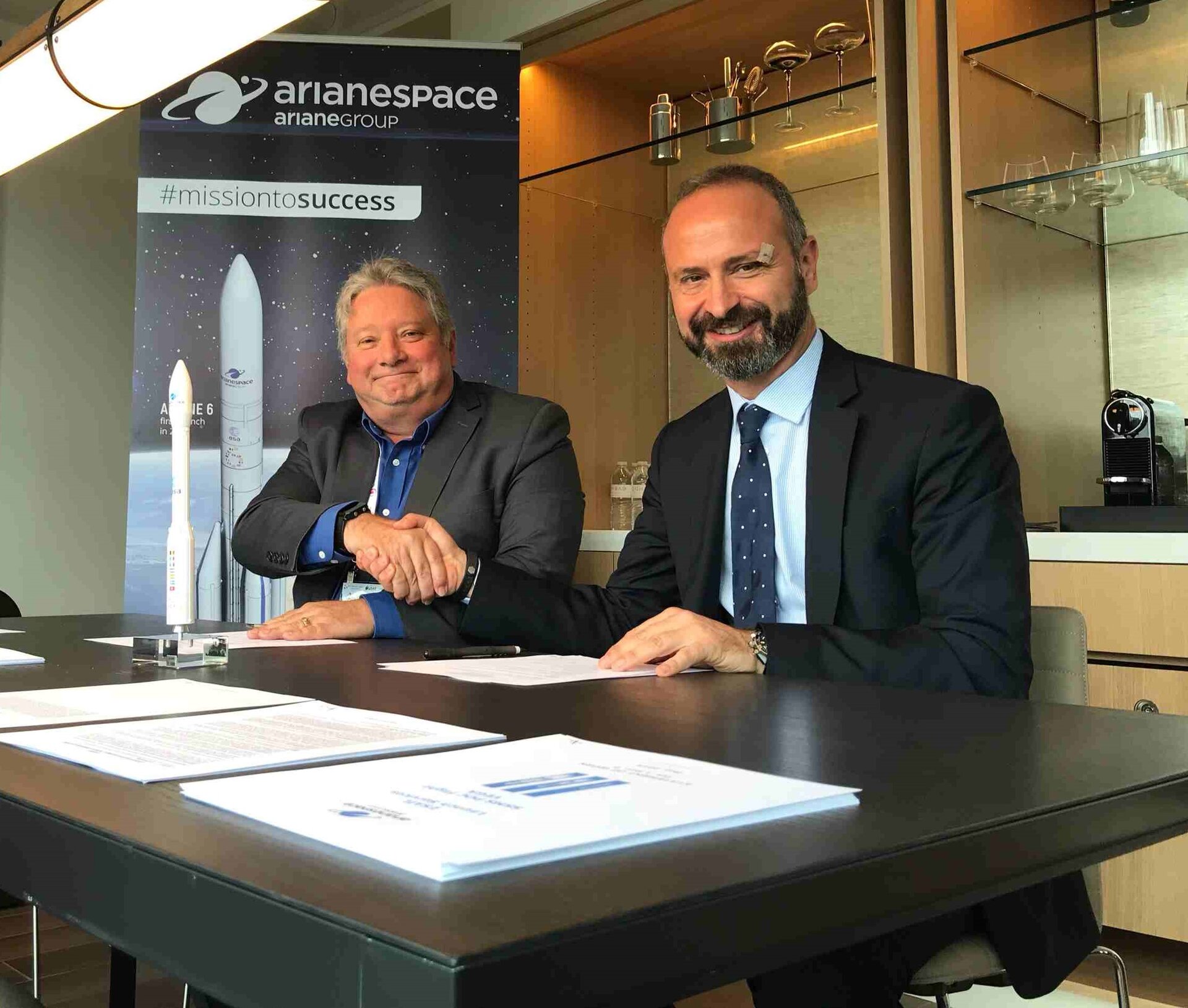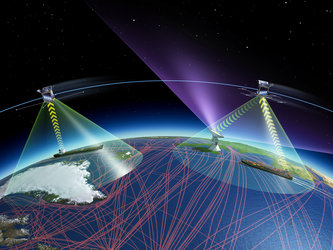

Signing of the ESAIL launch contract
The first commercial microsatellite developed under ESA’s SAT‐AIS programme for tracking ships, called ESAIL, has passed another milestone. On 9 May 2019, its Canadian operator exactEarth signed the launch service agreement with Arianespace.
ESAIL is part of ESA’s Partnership Projects and has been developed to enhance the next generation of space‐based services for the maritime sector. The spacecraft will track ship movements over the entire globe as it orbits the planet.
Satellite coverage is essential as about 90% of global trade takes place on the oceans. It opens the door to enhanced safety, tracking ships and route provisions for industry, government and maritime authorities.
Ships of 300 tonnes or more in international voyages, cargo ships of 500 tonnes or more in local waters and all passenger ships irrespective of size are mandated by the International Maritime Organization to carry Automatic Identification System (AIS) equipment
Terrestrial AIS antennas needs direct line of sight with the vessels, however, so the system is limited by the curvature of the Earth. Satellite automatic identification systems, or SAT‐AIS, have no such restrictions and can receive messages from ships on the open ocean, enabling authorities to follow vessels’ movements throughout their entire voyage.
The ESAIL satellite is built by LuxSpace for the exactEarth constellation of AIS satellites, through an ESA’s Partnership Project together with the Luxembourg Space Agency and other ESA member states.





